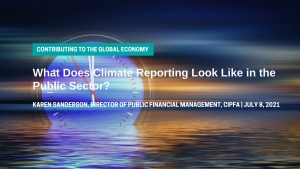عرض العناصر حسب علامة : الخدمات المالية
رسالة دكتوراه: الأهمية النسبية لأبعاد الشمول المالي في تحقيق المسئولية الاجتماعية للبنوك التجارية
رسالة دكتوراة تهدف إلى التعرف علي الأهمية النسبية لأبعاد الشمول المالي في تحقيق المسئولية الاجتماعية للبنوک التجارية.
رسالة دكتوراه: دور نموذج قياس تكاليف الأنشطة الموجه بالوقت TDABC في الارتقاء بدقة القياس التكاليفي ودعم القدرة التنافسية للخدمات المصرفية
·الهدف من الدراسة: تهدف الدراسة إلى بيان دور تطبيق نموذج قياس تکاليف الأنشطة الموجه بالوقت (TDABC) في الارتقاء بمستويات الدقة في قياس تکلفة الخدمات المصرفية المقدمة، من خلال القدرة على التتبع التفصيلي لعلاقة السببية وتحديد نسب الطاقة المستغلة، الأمر الذي قد يؤثر إيجابيا على دعم القدرة التنافسية للخدمات المصرفية.
معلومات إضافية
- البلد مصر
مستقبل الميزة التنافسية في الأعمال المصرفية والمدفوعات
تتزايد الإمكانات التخريبية للتكنولوجيا في قطاع الخدمات المالية بمعدل غير مسبوق لمنح الصناعة ميزة تنافسية
معلومات إضافية
-
المحتوى بالإنجليزية
The future of competitive advantage in banking and payments
The disruptive potential of technology within the financial services sector is increasing at an unprecedented rate to give the industry a competitive edge
by Alara Basul | November 1, 2021 | Bottomline
As financial firms turn to new solutions to stay competitive against the bleak backdrop of the global pandemic, there’s no surprise to see an increase in adoption across digital technologies, real-time payments and digital transformation. Businesses have had to prioritise their strategies in order to gain a competitive market advantage and stay compliant amid new regulations.
Bottomline’s latest report, The Future of Competitive Advantage in Banking and Payments, highlights the effects of the global pandemic and outlines the key components for banks and financial institutions (FIs) to remain competitive against the drive towards real-time payments, key regulations and trends, and consumer expectations towards speed, agility, and fraud protection.
Digital transformation and addressing innovation
For the banking industry, competition in the short term will depend on a successful digital transformation, as the overwhelming feedback from banks and FIs report that institutions require a greater focus on digital-centric solutions and better support internally from the top-down to accelerate change.
Sixty-four percent of respondents reported that digital transformation is the biggest objective for their business, followed by 41 percent reporting real-time payments, and 37 percent reporting cross-border payments as their main focus.
Digital transformation, real-time payments & cross border transactions are all closely linked as legacy systems require to be updated for real-time rails. Yet, nearly a fifth of banks and FIs (19 precent) are “somewhat sceptical” about their firm’s efforts towards creating a successful and modernised strategy.
Transitioning to a payments ecosystem
Connected finance was one of the key themes and takeaways from this report. Businesses recorded that 76 percent have a strong or extremely strong appetite to transition towards a payments ecosystem over the next five years, suggesting a strong use case for having an aggregated connectivity solution.
Respondents also confirmed that the biggest issues around their current payments infrastructure were legacy systems (47 percent), followed by the lack of operational efficiency (40 percent).
Lack of interoperability between internal systems ranked third, which ties back to the lack of operational efficiency as well as legacy infrastructure systems.
“Banks globally recognise the need for digital transformation as their end user expectations change,” says Gilles Ubaghs, strategic advisor, commercial banking & payments, Aite-Novarica Group.
“Putting off digital transformation is no longer an option as the Covid-19 pandemic has dramatically accelerated this shift, changing end user expectations, and is now changing the competitive landscape.”
Perhaps the most surprising discovery from the report is that despite the strong push towards payments modernisation, banks and FIs haven’t factored in the benefits of the payments ecosystem being SaaS rather than on-premise – only 31.5 percent saw migrating to cloud or SaaS technology as a top priority over the next 12 months.
Barriers to adoption
The payments industry has faced rapidly evolving technologies and adoptions of new services around real-time payments. It’s apparent from the findings that businesses that don’t provide real-time payments functionalities risk attrition and falling behind the curve.
And the growth of real-time payments is setting new records; in 2020, a record 70.3bn transactions were processed, up 41 percent from 2019, and is estimated to be on track to hit a 23.6 percent annual clip for the next five years.
By 2025, it’s also estimated that Real-time Payments (RTP) will have a 17.4 percent share of global payments.
However, it’s evident that with the ongoing global pandemic, businesses have found it difficult to prioritise their efforts on ramping up their offerings of digital payments in an already-busy roadmap of transformative initiatives.
Difficulties around adopting a legacy infrastructure ranked second among respondents (36 percent), followed closely by lack of IT resources (34 percent).
Banks & FIs have had to overhaul their business efforts from a regulatory and industry compliance point of view to keep pace with ISO 20022, SWIFT CSP, Confirmation of Payee and PSD2. The report highlights how leveraging real-time data, incorporating insights and analytics, and adopting a clear real-time payments strategy could be the difference between strengthening the customer experience and stemming attrition.
“The profitability of the payments business stands at a crossroads. The combined forces of fierce competition, regulatory interventions, and necessary investments in infrastructure and compliance put operating margins under pressure,” said Ron van Wezel, strategic advisor, retail banking & payments, Aite-Novarica Group.
“At the same time, the pandemic has boosted the adoption of digital payments, creating new opportunities for banks and other payment companies.”
Implementing ISO 20022
The report states that 13 percent of banks and FIs have implemented ISO 20022 to date, 15 percent are mid-way through implementing and 13 percent have already completed their implementation. However, 23 percent of respondents said that their businesses have just started preparations, with 25 percent noting that they have not yet started.
These figures show that many banks are under pressure or presumably facing the underestimated complexity of the migration and find it difficult to attain the right resources after understanding that the transition isn’t a simple upgrade of process.
SWIFT currently has 17 million payment messages exchanged each day, with numbers set to increase dramatically and imminently, so it’s imperative for businesses to get up to speed on the integration and transition required as soon as possible.
Navigating cross-border payments
Cross-border is a topic filled with regulation but critical to the health and success of any FI, especially in the EU.
Thirty-one percent of banks and FIs reported that the greatest obstacle to successful cross-border payments is the cost of maintaining so many ‘nostro’ accounts.
Other key pain points include issues with the slow or unknown speed for arrival of cross-border payments (21 percent), and the lack of visibility on payment status (24 percent). Furthermore, eight percent of respondents are also concerned about poor quality or loss of data.
It’s clear that there is now a need more than ever to reimagine the role of technology within the banking and financial sector, and it’s imperative for businesses to understand how to utilise new platforms and understand the impacts of new regulations in order to stay competitive and compliant in a crowded market.
To find out more about the research from The Future of Competitive Advantage in Banking & Payments, download the full report here. - البلد الأردن
مؤتمر تبادل الخدمات المالية 2021
معلومات إضافية
- البلد عالمي
- نوع الفعالية برسوم
- بداية الفعالية الإثنين, 27 سبتمبر 2021
- نهاية الفعالية الثلاثاء, 28 سبتمبر 2021
- التخصص محاسبة ومراجعة
- مكان الفعالية أونلاين أو شخصيا
كيف تبدو تقارير المناخ في القطاع العام؟
يوضح كارين سانديرسون، مدير الإدارة المالية العامة، CIPFA في هذا المقال، كيف تقوم مؤسسات القطاع العام بالإبلاغ عن تأثيرها على المناخ؟
معلومات إضافية
-
المحتوى بالإنجليزية
As the effects of climate change become more visible, organizations are experiencing increasing pressure to recognise and mitigate their environmental impact. In addition to greening operations, products and services, there is also a growing focus on reporting and disclosing environmental information to investors and the public. Sustainability reporting – reporting using environmental and social measures - is becoming common practice in the private sector. However, practices within the public sector are less prevalent. CIPFA conducted international research to better understand what public sector organizations are doing to report their impact on the climate.
For most countries, the public sector is the largest sector in the economy. Public sector organizations also influence the climate through regulation and through the provision of public services. Despite the size and scale of the sector, sustainability reporting in the public sector faces challenges for three main reasons:
there are many definitions, which can influence the scope and focus of a report;
there are numerous standards for sustainability reporting, with few referring directly to the public sector context; and
there are distinct differences between private and public organizations (purpose, motivation and responsibilities) which impact the way sustainability reporting is conducted.
After surveying public sector accountants, academics, auditors, public servants and standard setters, we found that of those who responded, less than half (44%) were currently preparing sustainability reports. Despite the low rate of occurrence in the sector, there was a clear appetite for this type of reporting among respondents, with the cited benefits of sustainability reporting including better environmental outcomes, social outcomes, cost savings and operational improvements.
We found that sustainability reporting in the public sector is also largely done on a voluntary basis. Of the international jurisdictions we researched, very few had mandatory sustainability reporting requirements for public sector organizations. The absence of a mandate is considered by participants in the research to be a key reason why the practice has not materialised in the same way as it has in the private sector. In addition to larger mandates, institutional commitment is also viewed as pre-requisite for wider adoption in the public sector.
CIPFA identified 12 sustainability reporting frameworks that could be used to report climate information. However, none of these identified frameworks focus specifically on the public sector context. Furthermore, we found no consistency or preference for a particular framework among respondents. In fact, among those who have prepared a sustainability report, only two-thirds (66%) confirmed that their organization used an established framework for the report.
Auditing sustainability reports was also a key area of focus for this research. Our survey found that currently, only 25% of sustainability reports prepared go through an audit or assurance process. However, there was a strong view that audit and assurance of such reports was essential to mitigate any risk of ‘green-washing’. Assurance was also considered to be critical in ensuring the reliability and credibility of reports more broadly.
Perhaps the greatest challenge for public sector sustainability reporting is capacity and capability. The specialist climate science expertise and broad skill set required in both the preparation and assurance of sustainability reports, requires organizations to have multi-disciplinary teams. We found that this requirement is beyond the scope of what most public organizations currently possess in-house. That said, there was a consensus that the public finance profession has a key role in sustainability reporting. Finance professionals have skills in establishing controls and systems for the collection and communication of complex data, as well as broader skills and experience that will be invaluable as sustainability reporting becomes more common.
Despite clear challenges, there is overwhelming support for the further development of sustainability reporting in the public sector. Our findings suggest that the act of committing to, and beginning to report, environmental and climate information provides the impetus needed to address many of the challenges involved. There was a consistent view that public organizations not currently reporting should begin reporting climate information as soon as possible. There was also strong agreement among research participants that work to align and harmonise frameworks should be a priority – with a particular focus on public sector application.
There is much to do, and clearly a desire to step up to the challenges involved in the evolution of public sector sustainability reporting. After all, the public sector is a significant contributor to climate issues and reporting can help measure that impact – meaning that governments can take more informed action to better contribute to global environmental and climate objectives. Transparent, relevant information is needed now to enable decision-making that best serves the interests of our planet.





